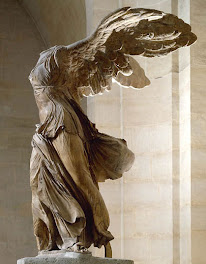"El restaurante decaía visiblemente. Se notaba cierta desgana en el trabajo. Parte del personal de servicio había pasado al pabellón de la Exposición, y se ponía mucho menos cuidado en la composición de la carta, de la que paulatinamente se iban borrando los platos típicos españoles, que requerían extremado cuidado en su elaboración. A medida que los vinos de la bodega se consumían, eran sustituidos por otros de inferior calidad. A consecuencia de todo esto, la clientela disminuía.
La mujer del cocinero, que padecía mucho de los pies, apenas salía de su habitación del desván, para no verse obligada a subir por la noche los ciento treinta y tres escalones. A las niñas las habían expulsado del colegio por su comportamiento insociable. Todo esto hacía que el cocinero se encontrase deprimido y empezara a pensar en cambiar aquel trabajo por otro más cómodo que le permitiera, por lo menos, alojar mejor a su familia. Estaba buscando algo cerca de la frontera.
Entre tanto, las visitas de inspección de Pujol se hacían cada vez más frecuentes.
En esta época de decadencia del restaurante, apareció por allí un hijo de Unamuno, Ramón. Era el más pequeño. Tenía la cara desfigurada, con la mándibula destrozada. Debajo de la boca le quedaba una masa de carne blanda y arrugada.
Hablaba con dificultad y en una forma casi ininteligible pero pudo explicar que había tomado parte, con los republicanos, en la batalla de Brunete, que fue feroz. En el bando opuesto, dos hermanos suyos peleaban con los nacionales. ¡Así de monstruosas son las guerras civiles!
--Fue una batalla cruel y sangrienta--dijo--. Los que no murieron, quedaron como yo, ¡como para ponerse debajo del tranvía!
Ramón Unamuno no podía comer más que purés y papillas, y se encontraba allí porque le habían dicho que en París había un médico muy famoso que sabía poner mandíbulas de plata. Y, al decir esto, brillaba en sus ojos una chispa de esperanza.
Al poco tiempo, María y Miguel se dieron cuenta de que el restaurante tenía sus dias contados. Como estaban fatigados de esa clase de trabajo, no quisieron aceptar el empleo que les ofrecían en el nuevo restaurante que estaba organizando el incansable Larrabeiti."
------------------------------------------------------------------------------------------------------------
THE RESTAURANT'S DECLINE
The restaurant was declining. On the one hand, the personnel's lack of enthusiasm, (quite a few had gone to work in the Exhibition's Spanish Pavilion restaurant). On the other, less care was dedicated in setting up the menu, where, every day, more dishes were dropped from the list, especially the Spanish regional ones which required extreme care in their elaboration. As the wines finished in the bar, they were substituted by others of lesser quality. Consequently, the clientele dwindled.
The chef's wife suffered terribly from her feet. She hardly left their room in the attic so as not to have to go up the hundred and thirty-three steps every evening. Their daughters were expelled from school due to their unsocial behaviour. Because of all this, the chef was very depressed, and was thinking of changing jobs to another that would be less entailing and would allow him to provide a better life for his family. He was looking for something closer to the Spanish border.
In the meantime, the Catalan partner's inspections became more frequent.
During this period of the restaurant's decadence, Unamuno's (a famous Spanish scholar and writer) youngest son, Ramón, appeared with a broken jaw which disfigured his face terribly. Below his mouth, he had a mass of soft and wrinkled skin. He spoke with difficulty in an unintelligible manner. However, he managed to explain that he had fought with the Republicans in the ferocious Brunete battle. While, on the National side, his two brothers were fighting. This is how monstruous Civil Wars are!
--It was a cruel and bloody battle--he said--. Those who didn't die were left like me. Ready to throw ourselves in front of a streetcar!
Ramón Unamuno could only eat purees or baby food. He had come to Paris to see a very famous doctor, expert on implanting silver jaws. As he said this, a spark of hope tinged his eyes.
María and Miguel soon realized that the restaurant had its days numbered. Since they were tired of that type of work, they didn't accept the untiring Larrabeiti's offer to go to his new restaurant.
CLÁSICOS REVISADOS 17
Hace 18 horas









































